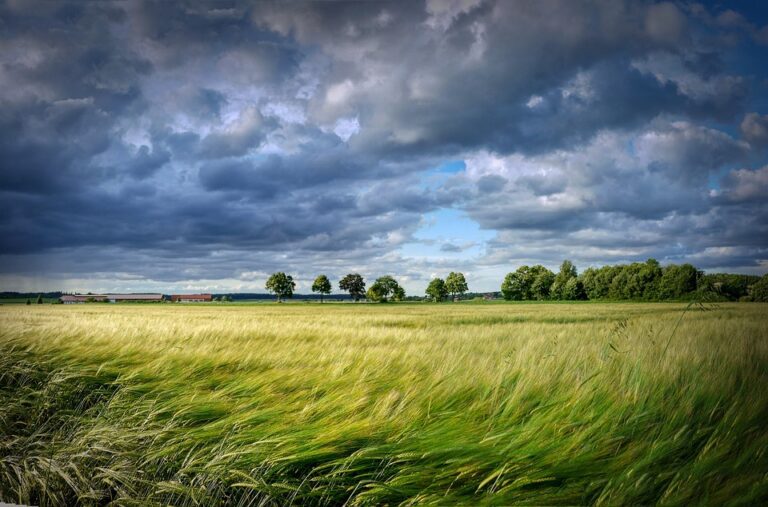Title: Environmental Restoration Triumphs: Turning Pollution into a Solution
Introduction
Pollution, a pervasive problem affecting every corner of the globe, has historically wreaked havoc on ecosystems, human health, and biodiversity. Yet, amidst this seemingly relentless tide of degradation, there lies a beacon of hope: environmental restoration. Across continents and ecosystems, dedicated communities, scientists, and policymakers are demonstrating that reversing environmental damage is not just a pipe dream but an achievable reality. Here are some inspiring success stories that underline the transformative power of environmental restoration.
The Resurrection of Chesapeake Bay
Chesapeake Bay, the largest estuary in the United States, was once a symbol of environmental degradation. Industrial pollution, agricultural runoff, and overfishing had severely degraded its waters, decimating its wildlife. By the 1980s, the situation seemed dire: seagrass beds were vanishing, fish populations were plummeting, and dead zones of oxygen-depleted water were expanding.
Enter a concerted, multi-state effort involving the federal and local governments, environmental organizations, and the public. The Chesapeake Bay Program was established in 1983, marking a turning point in the fight for the bay’s future. Strategies included reducing nutrient and sediment pollution from agricultural and urban sources, restoring wetlands, and implementing strict fisheries management.
According to the Chesapeake Bay Foundation’s latest report, these combined efforts have led to remarkable changes. Underwater seagrass beds are recovering, fish populations such as the striped bass have rebounded, and once-barren areas are teeming with life. Sarah Johnson, an environmental scientist with the Foundation, notes, "The Chesapeake Bay’s recovery showcases how integrated watershed management and community involvement can lead to substantial environmental improvements."
The Greening of China’s Loess Plateau
The Loess Plateau in China, covering over 640,000 square kilometers, was historically one of the country’s most degraded landscapes. Centuries of intense farming, deforestation, and overgrazing had transformed the region into a dusty, eroded, and barren wasteland. The resulting soil degradation heavily impacted agricultural productivity and the well-being of the local people.
In the mid-1990s, the Chinese government, in collaboration with the World Bank, launched the Loess Plateau Watershed Rehabilitation Project. The goal was ambitious: restore the natural ecosystem, improve agriculture, and elevate local livelihoods. The project implemented a series of measures such as terracing, afforestation, and the construction of silt dams. Farmers were encouraged to adopt sustainable agricultural practices, and economic incentives were provided to support the shift.
A 2016 study by the World Bank reported that within a few decades, the plateau witnessed a dramatic transformation. Vegetation cover increased from 17% to 34%, soil erosion was reduced by 70%, and agricultural productivity soared. The local climate became more stable, and water retention in the soil was enhanced. Yong Li, a project coordinator, emphasizes, "The Loess Plateau’s environmental restoration has become a model of how land degradation can be reversed through integrated and sustained efforts."
The Revival of India’s Chilika Lake
In the eastern state of Odisha, India, Chilika Lake, the largest coastal lagoon in the country, faced severe ecological decline by the mid-20th century. Shrinking water inflows, siltation, and pollution threatened the lake’s unique biodiversity, including the iconic Irrawaddy dolphins.
In response, the Chilika Development Authority (CDA) initiated a series of comprehensive restoration measures in the 1990s. They focused on reopening the lake’s natural sea mouth, dredging silted channels, and enhancing wetland vegetation. Local communities were actively involved, and eco-friendly tourism and sustainable fisheries were promoted as alternative livelihoods.
According to a 2020 publication by the CDA, the results were extraordinary. The lake’s salinity levels stabilized, fish populations recovered, and biodiversity flourished once again. "The successful restoration of Chilika Lake has not only revitalized an essential ecosystem but also fostered economic development for the surrounding communities," says Dr. Ranjan Panda, an environmentalist closely associated with the project. "It demonstrates that environmental health and human prosperity can go hand in hand."
Conclusion
These success stories in environmental restoration provide valuable lessons and immense hope for our planet. They prove that, with a combination of scientific knowledge, community engagement, and strong political will, we can indeed turn pollution into a solution. While challenges remain, the remarkable recoveries of Chesapeake Bay, the Loess Plateau, and Chilika Lake inspire us to continue striving for a sustainable and resilient future for all.
By sharing these uplifting narratives, we underscore the importance of collective action and the transformative impact it can have on our planet. Let these stories serve as a reminder that it is never too late to start the journey of environmental restoration and that each step we take brings us closer to a healthier, more harmonious world.
For further reading and detailed reports, visit Chesapeake Bay Foundation, World Bank on Loess Plateau, and Chilika Development Authority.
